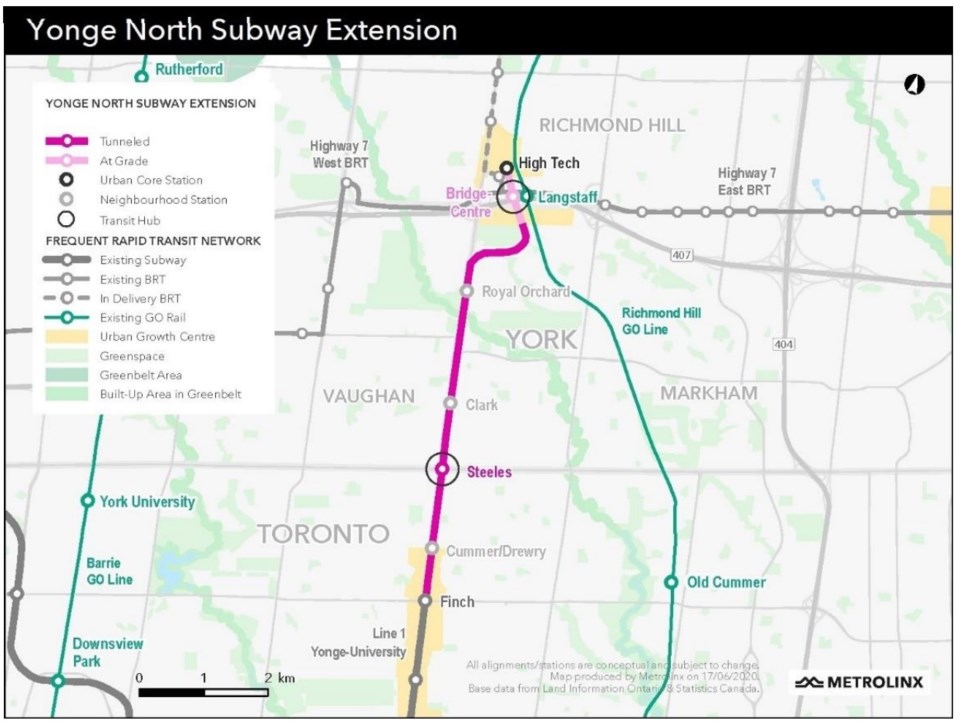Construction on the Yonge North Subway Extension, which would connect Vaughan and Richmond Hill into the Toronto subway system, could begin by 2024, but in the meantime, Newmarket Mayor John Taylor wants to make sure that communities in the northern areas of York Region get to have a say and benefit from the project.
"I continually see presentations that barely mention north York Region in this process. I would like to see more information about connectivity, other forms of transportation, what kind of parking is planned for commuters," said Taylor.
Last week, representatives of Metrolinx came to York Region council to present an overview of the initial business case for the subway extension, which explained the proposed route and stations and addressed questions such as whether tunnelling underneath homes will be required.
But very limited information was available on how the project would benefit commuters from more northern communities like Newmarket.
Even though the extension will not be reaching as far as Newmarket, Taylor said the project is an important one for all of York Region.
"This subway will be an economic driver for the entire region, certainly the southern region more, but for the entire region as well. The whole region's population will be largely paying for this subway, and we need to make sure the entire region is included in the conversations and enthusiastic about this opportunity," said Taylor.
York Region will be expected to pay $1.5 billion over an unspecified number of years as its contribution toward the project.
With an environmental assessment underway, and plans to begin accepting bids from contractors in the spring of 2022, Rajesh Khetarpal, vice-president of community engagement, said Metrolinx will be working with communities to gather as much public feedback as possible.
"Fundamental to our work is our commitment to work with communities, early, often, and throughout the planning stages. We know that we have a lot of work to do. We have a number of activities planned," Khetarpal said.
A schedule of upcoming consultation events presented to regional council, however, did not explicitly show any activities in the more northern communities of the region. This was a concern for Taylor.
"Only holding meetings in the southern municipalities reinforces the perception that this is a subway only for southern York Region, and to be blunt, that is a tactical error. We need enthusiastic support from taxpayers, and so we need a broader understanding of what the benefits would be to commuters from the entire region."
There was mention of how the new extension would connect with other transportation services in the region, but not in any great detail. It was noted that two of the new stations proposed for Richmond hill, High Tech and Bridge, are designed to be transportation hubs and will connect to other transportation services.
The preferred plan for the subway has been changed so that it will come above ground in this area, making it easier for riders on buses to switch to the subway without having to go deep underground. Once on the train, it will cut the time to get into downtown Toronto by 20 minutes.
The change in plans also avoids the necessity of tunnelling under a local cemetery, but it will mean that the subway will need to tunnel under some homes instead. The Metrolinx representatives noted that the tunnels will be an average of 20 metres underground and will use vibration-absorbing technologies, so there should be no impact on homes.



